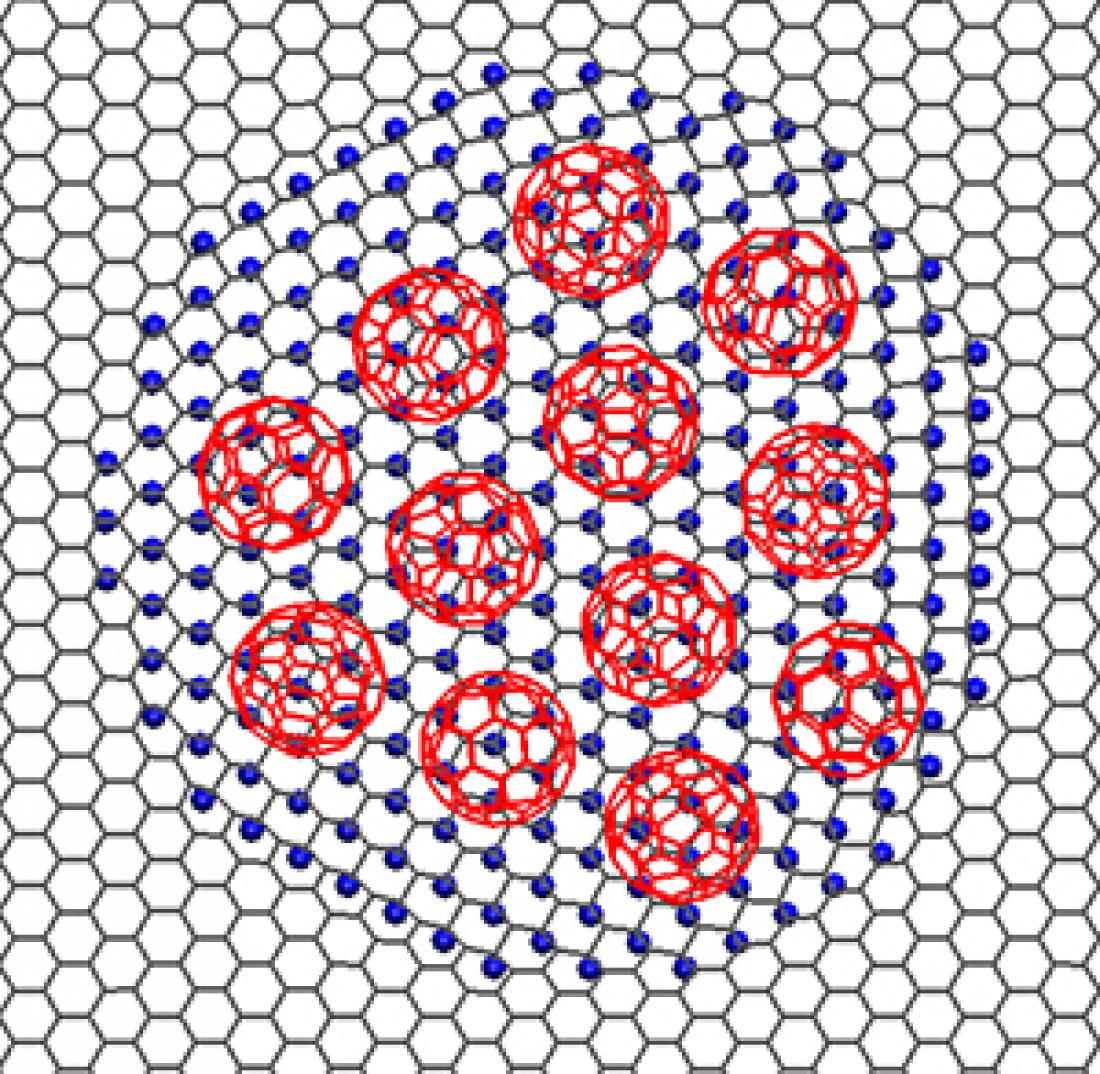An array of graphone domains (blue), containing trapped fullerene molecules (red), distributed in a graphene matrix.
Reproduced, with permission, from Ref. 1 © 2012 IOP Publishing
Graphene’s versatile electronic, chemical and mechanical properties have placed it center stage in physical sciences research, with attention currently focused on its potential applications. Computational experts are contributing unique insights by investigating graphene-based structures in silico. By exploring the structure and properties of graphone — graphene that is hydrogenated on one side — a research team from Singapore and the USA has provided a potential template for packing molecules. These structures could be useful for trapping molecules for energy storage or biological applications.
Led by Chilla Damodara Reddy of the A*STAR Institute of High Performance Computing, Singapore, the research team computationally constructed a large square graphene sheet with hydrogen atoms covalently bonded above every other carbon atom to form a graphone domain. Depending on the size of the domain, the graphone regions distorted into three distinct three-dimensional architectures. Small domains morphed into a cap shape, while larger domains resulted in interfacing graphene and graphone segments curving in opposite directions with the center of the graphone patch remaining flat. A third, intermediate, morphology showed undulations both at the graphone/graphene interface and in the center of the hydrogenated graphone. A 5% lattice mismatch between graphene and graphone caused the three-dimensional distortions.
All of the structures were stable well above room temperature. Reddy and co-workers also observed so-called ‘energy wells’ in the graphone domains, which they tested to determine whether or not they could trap molecules. They used fullerenes as their model molecules.
The researchers designed materials with graphone domains a suitable distance apart and of appropriate diameter to optimize the trapping of multiple molecules within the energy wells. They also proposed a minimum spacing between the domains to prevent instability between trapped molecules of neighboring domains.
Reddy and his co-workers extended the work to explore the possibility of trapping multiple fullerenes within one graphone domain. They showed that a domain with a diameter of 2 nanometers could trap three fullerenes in a triangular array, while one with a diameter of 4 nanometers could trap twelve molecules in different undulations of the graphone domain (see image). These structures were also stable at room temperature; although at very high temperatures — above 700 kelvin — the molecules could escape the confines of the energy well.
“Our graphene-based structures provide a potential template for packing other molecules, such as hydrogen and methanol molecules, which could be used in energy applications,” say the researchers. They could also trap proteins and DNA for use in biological applications.
The A*STAR-affiliated researchers contributing to this research are from the Institute of High Performance Computing
References
Reddy, C. D., Zhang, Y. W. & Shenoy, V. B. Patterned graphone — a novel template for molecular packing. Nanotechnology 23, 165303 (2012).



